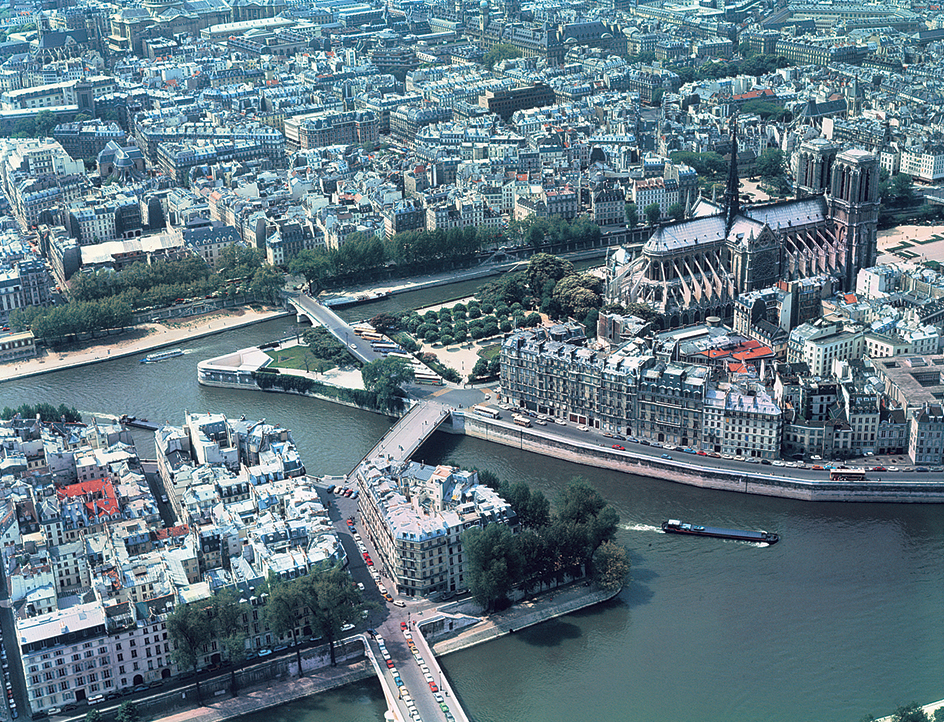Île-de-France, << eel duh frahns, >> is an area in northern France that includes Paris, the French capital. The area has long been the center of French government, culture, and the arts. It has some of the country’s most beautiful and important buildings. Numerous well-known leaders, saints, artists, and authors have come from the area.

Île-de-France extends from Paris into the surrounding countryside, foothills, and low mountains. It covers roughly 4,600 square miles (12,000 square kilometers). The Seine River divides the land. Île-de-France is French for Isle of France, though the area is not an island.
Île-de-France is one of the main administrative units, or regions, of Metropolitan France. Metropolitan France includes mainland France and the island of Corsica. France’s regions are divided into smaller units called departments. Île-de-France includes Paris (its own department) and the departments of Hauts-de-Seine, Seine-Saint-Denis, Val-de-Marne, Seine-et-Marne, Yvelines, Essonne, and Val-d’Oise.
A lowland area called the Paris Basin dominates Île-de-France. It consists mainly of the floodplains of the Seine and its tributaries—that is, the smaller waterways that flow into it—such as the Marne and the Oise. Much of the area is urban, but fields and meadows reach into the surrounding foothills. The region has a number of parks and several World Heritage Sites. Such sites are places of unique cultural or natural importance, as designated by the United Nations Educational, Scientific and Cultural Organization (UNESCO). The sites include the palaces of Versailles and Fontainebleau, as well as the entire Paris center along the Seine.
Local cuisine includes vol-au-vent (stuffed puff pastry), lamb stew, potage St. Germain (pea soup), fricassée de lapin (stewed rabbit), French onion soup, and several types of brie cheese. Area pastry shops and bakeries are known for their confections and baguettes (long loaves of French bread).
Celtic tribes settled in the Île-de-France area long before the Romans established a colony there in 52 B.C. Paris became the capital of the Frankish kingdom in A.D. 507. As French kings gained power, the city and region grew in importance and population. Overcrowded conditions, however, contributed to the spread of plague in the mid-1300’s. The epidemic, known as the Black Death, reduced the region’s population by one-third. Over the years, a number of wars have touched Paris and Île-de-France. The worst damage occurred during the French Revolution (1789-1799), the Franco-Prussian War (1870-1871) and the Paris Commune uprising (1871), World War I (1914-1918), and World War II (1939-1945).
See also Paris .
